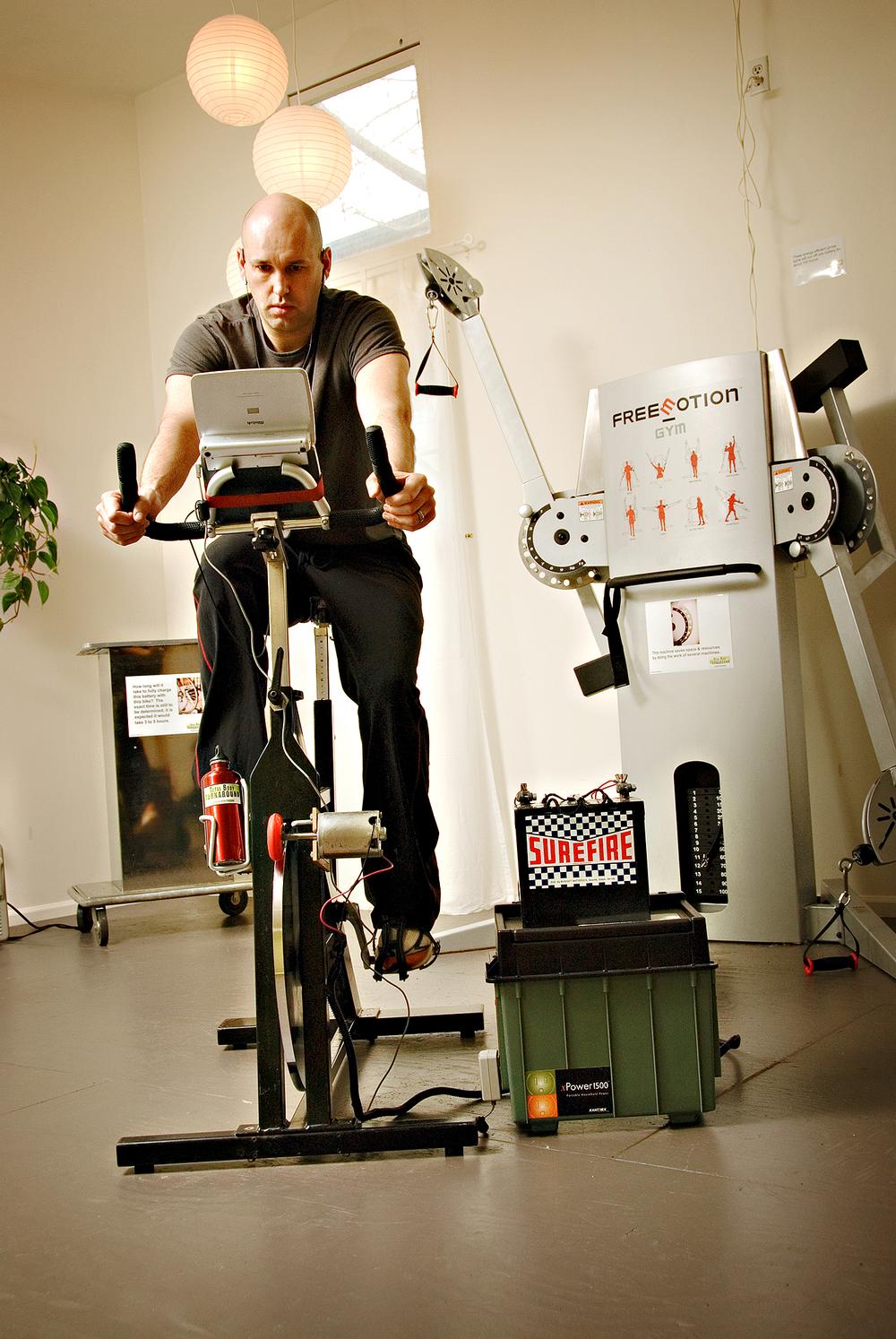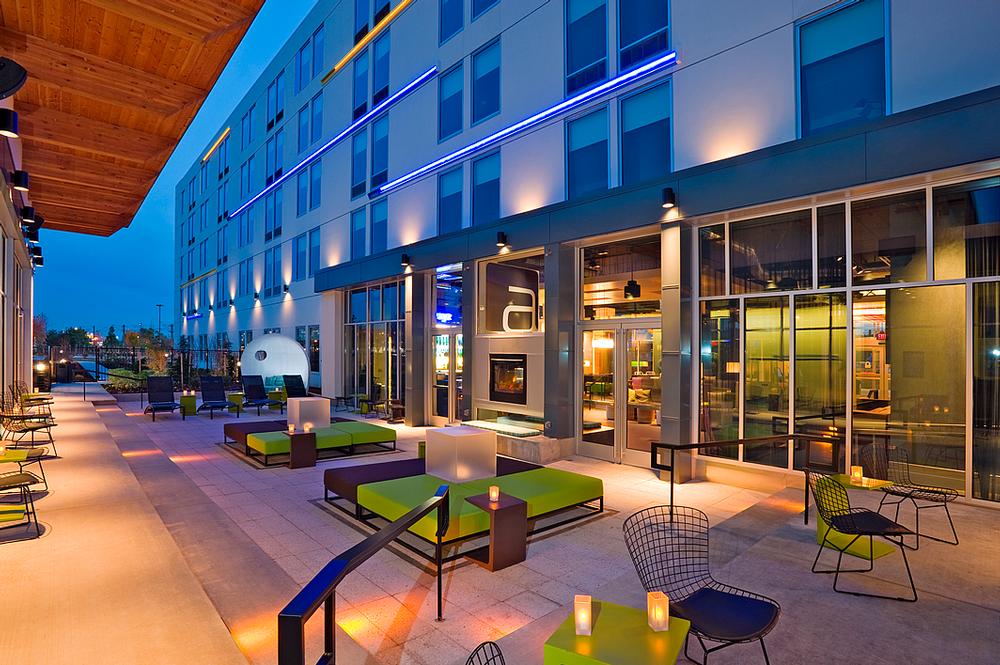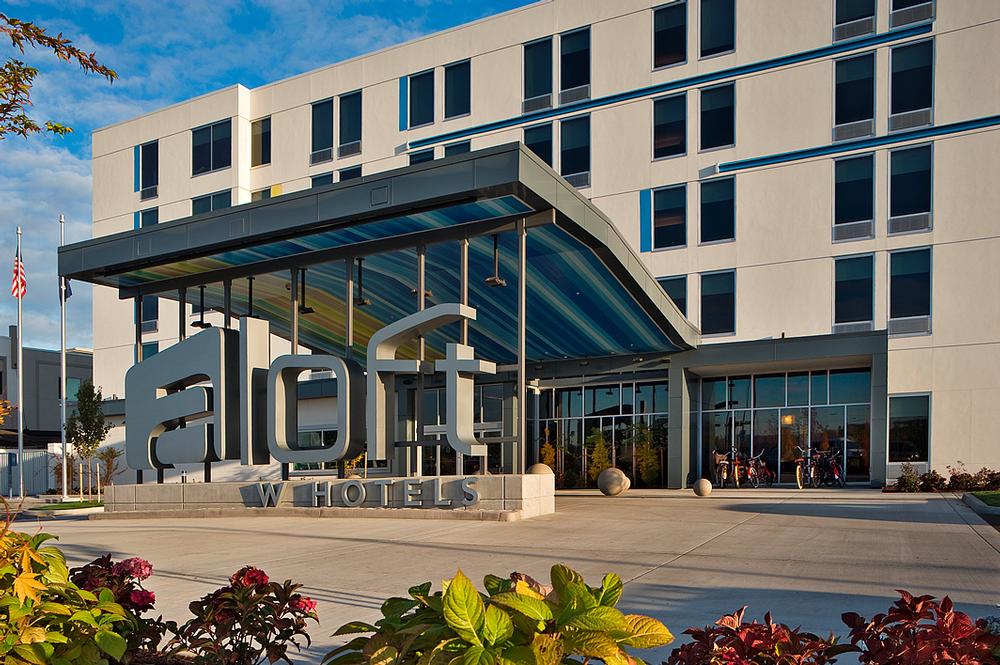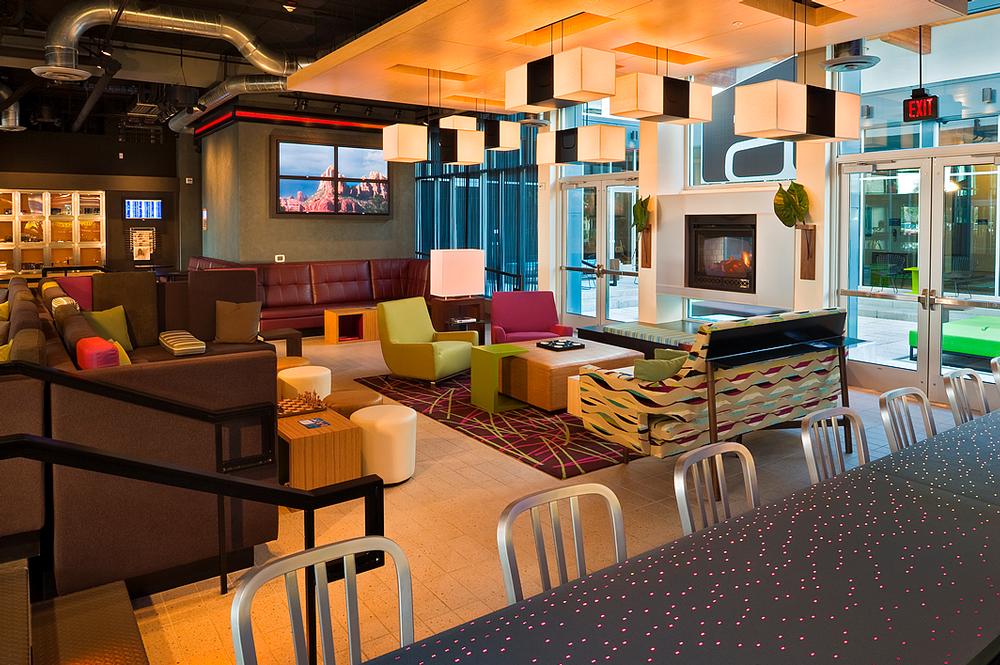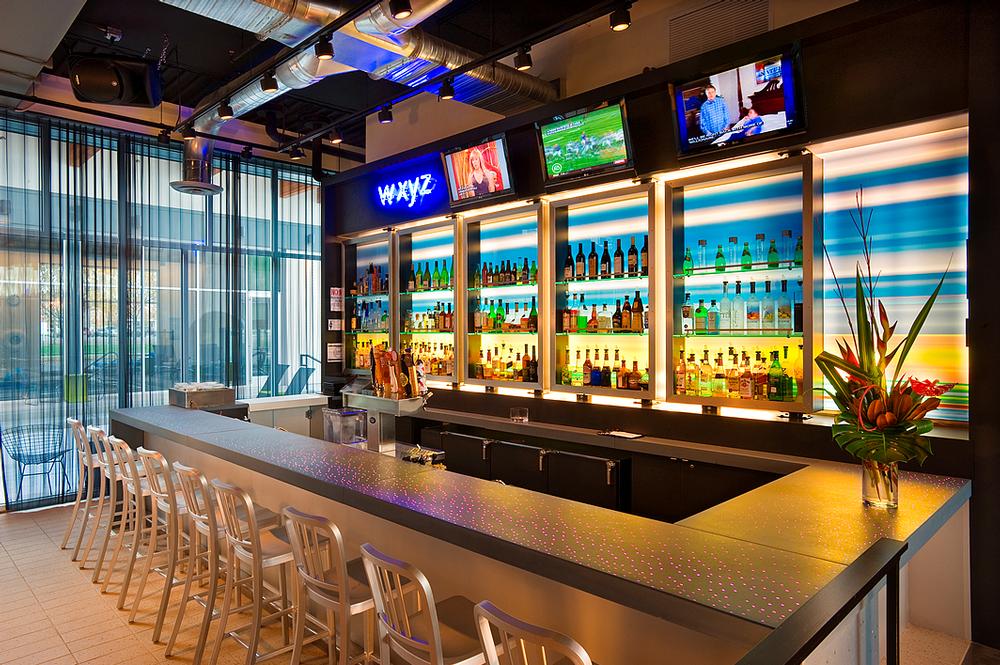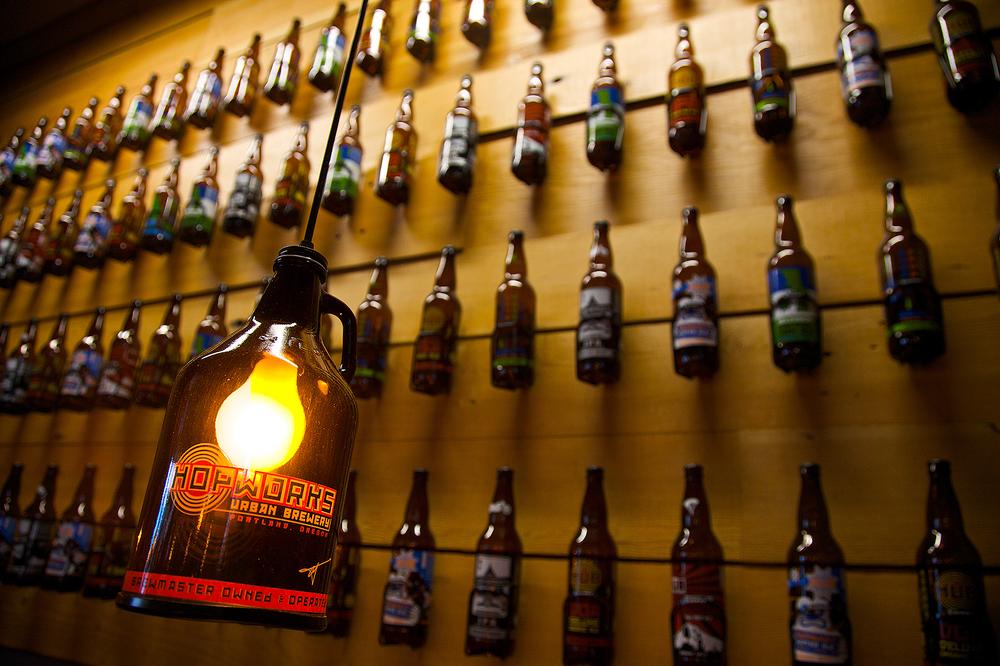features
Portland Oregon
It’s got ambitious bicycle plans, gyms powered by human energy and the highest number of LEED Platinum-certified buildings in America. Magali Robathan finds out why Portland, Oregon is regularly voted the US’s greenest city
Known for its rose gardens, creative culture and environmental awareness, Portland has long had a reputation as a city ahead of its time, and regularly tops polls for the greenest US city. From sustainable transport to town planning, green building to free bike initiatives, the city has been leading the way in terms of environmental policy for many years.
In 1971, Oregon introduced the first ‘bottle bill’ recycling programme in the US, in order to address the state’s growing litter problem and reduce the amount of waste going to landfill. In 1993, Portland became the first local government in the US to adopt a strategy to reduce carbon emissions, with the introduction of its Global Warming Reduction Strategy. Carbon emissions are now 26 per cent lower per person than they were in 1990, in contrast with the trend elsewhere in the US.
In 2000, Portland City Council created an Office of Sustainable Development, and in 2009 was the first US city to merge its planning and sustainability departments to form the Bureau of Planning and Sustainability.
“I really wanted to change it so sustainability is the default of all policy, of all management, of all planning decisions,” said Mayor Sam Adams of the decision to merge the two functions.
The bureau has saved more than $18m in energy costs for the city by implementing a range of innovative measures including re-timing traffic lights to minimise the amount of time cars spend idling, saving more than 17 million gallons of gas a year.
CYCLING PORTLAND
Thanks to its urban cycling efforts, Portland has long been seen as a bike-friendly city, and in 2010 it was voted the second best bicycling city in the world after Amsterdam by the League of American Bicyclists.
Portland’s first bicycle plan was adopted in 1973, calling for the creation of almost 190 miles of bike infrastructure in the city. By 1996, this had been achieved, and the city adopted a new bicycle plan, which called for a further 445 miles of bicycle infrastructure to be built by 2016.
In 1994, activists Tom O’Keefe, Joe Keating and Steve Gunther launched The Yellow Bike Project, one of the US’s first community bicycle programmes. It started with 10 old bikes, donated by Portland’s Community Cycling Center, a non-profit. The bikes were repaired by trainee mechanics, painted yellow and left around Portland for people to use, for free. The resulting press coverage saw the scheme grow as hundreds of people donated old bikes.
The Yellow Bike Project evolved into the Create a Commuter programme, which provides 375 free bikes a year to people on low incomes. The scheme, which is run by Portland’s Community Cycling Center, provides ‘fully-outfitted commuter bicycles to low-income adults striving to connect to work or workforce development by bicycle.’ Participants are given a bicycle, lights, locks, pumps and tools and receive instruction on bicycle safety and commuting basics in a five hour workshop.
In 2010, Portland City Council voted unanimously to adopt the Portland Bicycle Plan for 2030, which supersedes the 1996 plan. It calls for more than a quarter of all trips to be made by bike by 2030, and recommends expanding the network of planned bikeways from 630 to 962 miles. It also aims to improve and preserve the existing bikeways, increase bicycle parking and encourage cycling by raising awareness and offering free maps and information to the public.
GREEN MUSEUMS
When the management at the Oregon Museum of Science and Industry (OMSI) sat down to create the next five year plan for the museum, they decided it was time to really make sustainability a key focus.
“OMSI has had a longstanding commitment to basing activities on a ‘triple bottom line’ of environmental sustainability, financial strength, and social responsibility,” says OMSI’s energy and environment spokesperson Chris Stockner. “In the past, this approach has informed everything from the museum’s facility operations to its goals of educating visitors – but not in a comprehensive way.”
The museum is visited by around one million people a year, so there was a real opportunity to help people understand critical issues for the planet.
“One of the primary goals we’ve set is to become a key educational resource on sustainability, energy technology and earth systems science,” says Stockner. “We’ve set ourselves a goal to serve as a hub for the public to learn about sustainable solutions and the cutting edge research that’s going on in Oregon and beyond.”
The museum’s Energy and Environment Initiative is offering a public platform for scientists working to create sustainable solutions and act as a bridge between industry and public education.
A range of exhibits and programmes were introduced as part of this initiative. The museum’s Earth Lab features fun, hands-on exhibits and demonstrations aimed at teaching visitors about core earth science concepts such as density, plate tectonics, renewable energy and ice cores.
The Sustainability Museum Exhibit aims to encourage visitors to think about how their personal choices can help create a healthier planet. An accompanying outreach programme spreads the message via mobile phone technology, events and transit signage.
A permanent, hands-on exhibit on renewable energy launched in December 2012, focusing on the unique energy mix of the Pacific Northwest, including emerging technologies in solar, wind and wave energy. A related classroom outreach programme allows students to design and test their own wind turbine and looks at how families can reduce energy consumption.
OMSI is also hoping to influence other museums to become more sustainable, and has developed a green exhibition checklist. This provides guidelines on how to use recycled, locally-sourced materials in exhibitions and how to offset the impact of carbon emissions from the energy used.
Other green measures include new chillers within the museum, which are reducing the museum’s electricity use by around 20 per cent, the introduction of a composting programme and the use of a rainwater management system which redirects rainwater into vegetation and soil rather than into the sewer system.
“Our most important successes are when people walk away from the museum or one of our programs with new knowledge or an expanded sense of possibilities,” says Stockner. “Recently we had an event in connection with the Planet under Pressure conference. At the end of the day the museum was closed and we had kids still asking questions and doing the activities. They didn’t want to leave.”
HARNESSING HUMAN POWER
The Green Microgym has three gyms, all in Portland. Energy-saving measures include the use of solar power, member-controlled lights and televisions which are only turned on when needed, treadmills that use 30 per cent less electricity than regular machines and compact fluorescent lighting. It’s the energy-producing cardio equipment that makes it really unusual though – the gym’s exercise machines are fitted with small generators, meaning that members’ workouts generate electricity which is used to help power the televisions, stereos, lights and fans.
The company was established in 2007 by Adam Boesel, who wanted to see if the idea of creating electricity by exercising could be used in a mainstream gym setting. “I wanted to provide a legitimately green alternative to fitness facilities, which are traditionally not eco-friendly,” says Boesel. “I also thought it would be a fun career and an interesting challenge.”
In 2010, according to the company website, the Green Microgym generated 36 per cent of its own electricity by combining human and solar power, and saved 37,000 Kilowatt hours or 85 per cent (compared to traditional gyms per square foot). Typical gym users generate between 50 – 150 watts of power during their workout.
Boesel admits that the energy produced by the exercise machines accounts for just a small percentage of the building’s total energy needs, but says “the equipment is one part of a comprehensive system of doing everything as green as possible, understanding that ‘green’ is an aspiration as well as a destination.” While, others have pointed out that the payback period on this type of equipment can be up to two or three times the lifespan of the average machine, Boesel is not worried.
“This isn’t solar panels on the top of your house where you have to look at return on investment that way,” he says. “This is altering exercise equipment to be more ecologically friendly. I would have had to buy it anyway for my gym, so for about the same price as new, I can purchase remanufactured equipment, and retrofit it with PlugOut technology and make the world a better place. It’s an easy choice to make if you have the right perspective.”
Members also earn points by working out under the gym’s incentive scheme, which they can use to get money off products when shopping at local stores.
The gym uses PlugOut spin bikes, PlugOut Ellipticals and PlugOut Recumbant Bikes, all developed by Seattle-based company PlugOut Fitness, manufacturers and suppliers of electricity-producing cardio equipment (co-founded by Boesel).
SUSTAINABLE HOTELS
In February, The Courtyard by Marriott in Portland’s city centre became the first Gold LEED-certified hotel in the Pacific Northwest, and one of just 15 in the whole of the US. All of the hotel’s electricity comes from renewable sources, 77 per cent of waste is composted or recycled and the hotel is reducing its carbon footprint by using 28 per cent less energy than is normally used in a building of its size.
The Aloft Portland Airport hotel has also won awards for its green efforts, which include its Bike and Fly programme – the hotel stores guests’ bikes for up to 14 days for free, allowing travellers to cycle to the airport. Portland’s DoubleTree Hotel, meanwhile, was the first Green Seal certified convention hotel in Oregon, and has a Green Meetings Specialist who can help business guests design a carbon neutral meeting. The Hotel Monaco Portland, part of Kimpton Hotels, is Green Seal Silver Certified and employs a range of green measures, including recycling bins in guest rooms, printing on recycled paper with soy-based inks and using only environmentally-friendly cleaning products.
BEER AND BIKES
The founders of Hopworks Urban Brewery and Hopworks BikeBar describe the bars as Portland’s first ‘Eco-Brewpubs’. Their mission is to provide “world-class beer and food as sustainably as possible,” and their efforts to do so has seen them win numerous sustainability awards.
The Urban Brewery opened in March 2008, and features a 125-capacity restaurant and a 75-capacity bar serving hand-crafted organic beers, while Hopworks second bar, Hopworks Bike Bar, opened in North Williams last summer. The second bar is on what Hopworks owner Christian Ettinger dubs the ‘Williams bike highway’ – 3,000 riders commute past the bar each day – and has been designed to appeal to cyclists, with 75 bike parking spaces, locally-made bike frames hanging over the bar, and the free loan of bike tools and locks. Both bars are powered with 100 per cent renewable energy and carbon emissions are offset.
All company vehicles are run on a mix of biodiesel and used fat fryer grease, the company has a zero per cent waste initiative in place and staff are trained in sustainability methods. The bars host regular beer and bike festivals, which feature live bands, activities, BMX trick riders and breakdancers.
Other green measures include capturing rainwater for dry season irrigation and cleaning, the use of low-flow toilets, sinks and dishwashers and energy efficient light bulbs, timers and sensors.
So from bikes to breweries, and exhibitions to exercise bikes, Portland is staking its claim to a greener future.
PORTLAND’S CLIMATE ACTION PLAN PROGRESS REPORT
In April 2012, the City of Portland Bureau of Planning and Sustainability and Multnomah County Office of Sustainability released a two-year progress report for Portland and Multnomah County’s 2009 Climate Action Plan. The Climate Action Plan is a three-year plan to put Portland on a path to achieve a 40 per cent reduction in carbon emissions by 2030, and an 80 percent reduction by 2050.
“We’re making solid progress on our ambitious Climate Action Plan goals, in part because we’re creating a more connected city,” said Portland Mayor Sam Adams. “Portlanders now have more low-carbon options to get to school and to work, more efficient ways to heat and power their homes and new ways to deal with household waste.”
According to the progress report, by the end of 2010 carbon emissions were 6 per cent below 1990 levels, while in comparison, national carbon emissions were up almost 12 per cent over the same period.
Other highlights from the report:
- Portland homes use 10 per cent less energy per person compared to 1990, and a larger percentage of the energy that is used now comes from sustainable energy sources.
- More than 1,400 homes and businesses have installed solar panels since 1990 across the county.
- While the population of Multnomah County has increased 26 per cent since 1990, fewer gallons of gasoline were sold in the county in 2010 than in 1990.
- Since 2009, the number of cyclists has increased by 14 per cent.
- Portland is home to 150 certified green buildings, and has more LEED (Leadership in Energy and Environmental Design) Platinum buildings than any other US city.
- Over 500 organisations and individuals have signed on to support the Multnomah Food Action Plan.
Source: City of Portland Bureau of Planning and Sustainability
ABOUT THE AUTHOR
Magali Robathan is managing editor
of Leisure Management magazine
EMAIL: [email protected]
TEL: +44 (0)1462 431385
From Sports Management Issue 1 2013, p60


